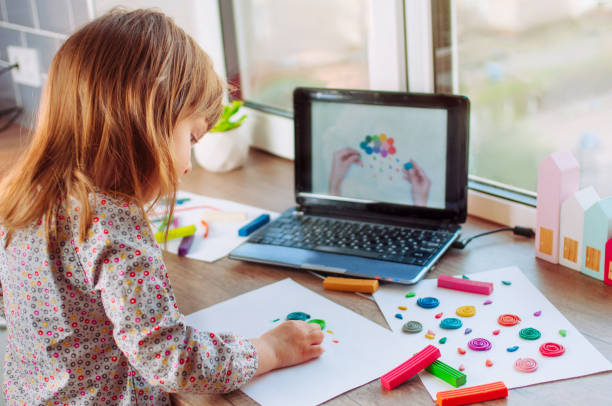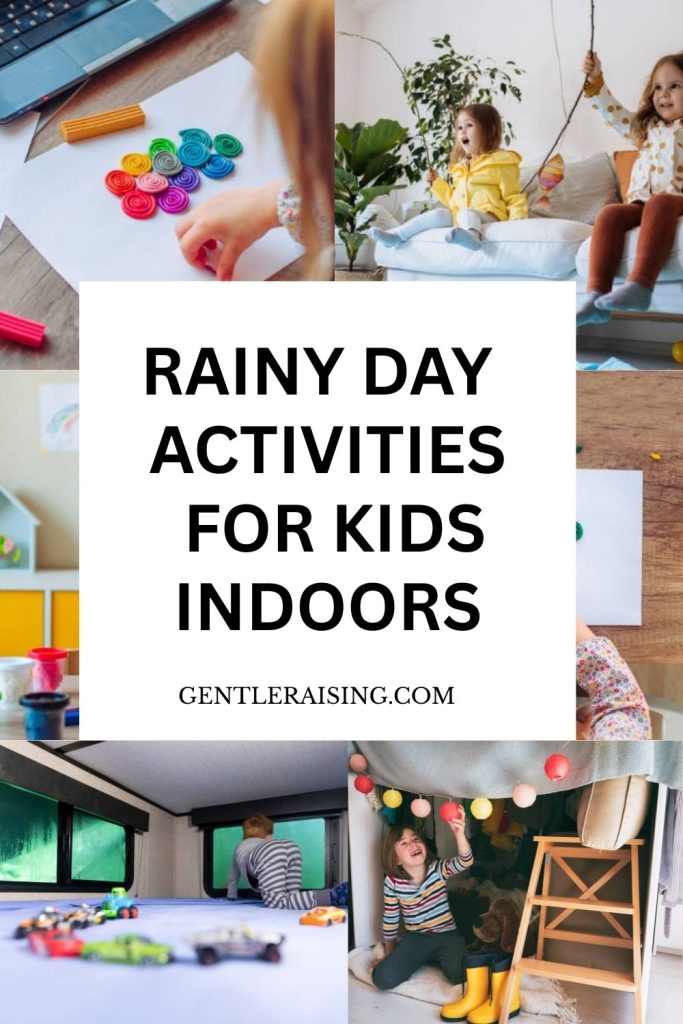The Rainy-Day Dilemma
There’s something about rain tapping against the window that feels cosy… until you remember you have kids bouncing off the walls with nowhere to go. For parents, especially new mothers or fathers still finding their rhythm, the sound of thunder isn’t soothing background music. It’s a reminder that your living room is about to become both a playground and a battleground.
We’ve all been there. The toys are already scattered across the floor, the kids are restless, and you’re silently calculating how many hours remain until bedtime.
Here’s the good news: rainy days don’t have to be wasted days. In fact, some of the most cherished family memories are made when we’re stuck indoors together.
This isn’t just a list of “things to keep the kids busy.” It’s about turning rainy days into an opportunity for laughter, learning, and, dare I say, a little peace of mind.
Let’s walk through a mix of creative, active, educational, and calming activities you can actually pull off without needing a craft store’s worth of supplies or a second degree in child psychology.
The Power of Simple Play
Sometimes we parents overthink things. We picture Instagram-worthy crafts or Pinterest-perfect setups, when the truth is, kids often just want our attention and a chance to use their imagination.
Take scavenger hunts. You don’t need fancy props. Write a list of items they can find around the house: “something red, something that makes noise, something soft.” Add silly challenges like, “find a sock that doesn’t have a partner.” Suddenly, everyday objects become a treasure hunt.
Then there’s the classic blanket fort. I know, it sounds cliché, but kids never get tired of it. A couple of chairs, some blankets, maybe a string of fairy lights if you’ve got them, and you’ve created a whole new world. Don’t underestimate the power of a “no adults allowed” fort, though; sometimes, giving them space inside their little fortress is exactly what they need.
And of course, hide-and-seek. Indoors, it takes on a different charm. You can add twists, like using flashlights in a darkened room or hiding small toys instead of people. It’s low prep, high fun, and reminds you that joy doesn’t have to come with a price tag.
Creative Corners – Arts and Crafts Without the Chaos
Arts and crafts often sound better in theory than in practice. Parents imagine cute handprint art, but reality looks like paint on the walls and glitter in the dog’s fur. Still, creativity is vital; it builds fine motor skills, sparks imagination, and helps kids process feelings they might not have words for yet.
Start simple. Sock puppets. Paper bag characters. These don’t just keep little hands busy; they lead to puppet shows that can last for hours. You’ll be surprised at the dramatic storylines your kids invent (there’s always a villain and usually some kind of snack-related emergency).
Painting doesn’t have to mean a mess, either. Try sponge painting or Q-tip dot art. Recycled crafts are another lifesaver. Empty cereal boxes turn into castles, toilet paper rolls into rockets, egg cartons into caterpillars. You’re not just entertaining your kids, you’re teaching them resourcefulness.
And here’s a parent hack: set up a “yes space” for crafts. A table with an old sheet on the floor, washable supplies, and a rule that says, “Everything messy stays here.” It’s not foolproof, but it does save you from scrubbing marker off the couch.
Let’s Get Moving (Even Indoors)
Kids have endless energy, and if they don’t get to burn it, everyone suffers. Rainy days make playgrounds a no-go, but that doesn’t mean you’re stuck with chaos.
Try an indoor obstacle course. Use pillows as stepping stones, chairs as tunnels, and tape lines on the floor for balance beams. Time them and let them try to beat their own record; it’s exercise disguised as play.
Balloon volleyball is another gem. Blow up a balloon and let them bat it across an improvised “net” (a piece of string between chairs works). The beauty of balloons? They float slowly, giving younger kids time to play without frustration.
And then there’s the old standby: freeze dance. Crank up some music, let them dance, then hit pause and watch them freeze in hilarious poses. Bonus: it doubles as cardio for you if you join in.
Safety tip, yes, I’m going to sound like your cautious friend here, make sure sharp corners are padded, and breakables are out of reach. Indoor play should end in giggles, not a trip to urgent care.
Quiet Time That’s Actually Fun
You can’t go full throttle all day. Both kids and parents need quiet pockets, moments where the energy dials down but the fun doesn’t.
Storytime is the obvious choice, but add a twist. Read with exaggerated voices. Make the kids the characters in the story (“Once upon a time, Princess Mia and Knight Lucas set out on an adventure…”). Suddenly, they’re fully invested.
Audiobooks are another secret weapon. Services like Audible or Libby have a treasure trove of children’s books narrated by actors who make the stories come alive. Pair this with a cosy blanket and hot cocoa, and you’ve got calm disguised as magic.
For hands-on quiet play, puzzles work wonders. Choose age-appropriate ones, or even create your own by cutting up magazine pictures. Board games fit here, too, just keep expectations realistic. A four-year-old probably won’t sit through Monopoly, but Candy Land or Connect Four? Absolutely.
Quiet doesn’t mean boring. It’s about teaching kids to appreciate moments of stillness without them feeling like a punishment.
Learning Disguised as Play
Let’s be honest: parents often feel guilty about “wasting” days inside. But here’s the trick: you can sneak in learning without it feeling like homework.
Cooking together is a goldmine. Measuring flour teaches math, following recipes builds comprehension, and tasting teaches… well, deliciousness. Start simple: pancakes, cookies, even homemade pizza with fun toppings. Yes, it’s messier than doing it alone, but the payoff is big.
Science experiments are another rainy-day superstar. Remember the classic vinegar and baking soda volcano? Or mixing cornstarch and water to make oobleck (a non-Newtonian fluid that’s both solid and liquid)? Kids light up when they see “magic” happen, and you get to sneak in some science vocabulary.
Lego challenges also work beautifully. Give a theme, “build a bridge strong enough to hold an apple”, or “design an alien city.” This sparks problem-solving and creativity.
For digital-friendly families, websites like National Geographic Kids or Scholastic offer interactive games and printable activities that feel more like fun than schoolwork.
Togetherness Projects That Feel Special
Sometimes the best activities aren’t about keeping kids busy but about creating something together.
Start a family scrapbook. Gather old photos, ticket stubs, or even just drawings from the day, and glue them into a notebook. Over time, you build a tangible record of family memories.
Or make rainy-day journals. Give each child a notebook where they can write, draw, or paste little things from the day. Younger ones can dictate while you write; it becomes a shared project.
Then there’s indoor camping. Set up a tent in the living room (or just pretend with blankets), dim the lights, hand out flashlights, and tell stories. Add snacks like popcorn or s’mores made in the oven, and suddenly the rain feels like part of the adventure.
These activities aren’t just time-fillers, they’re memory-makers. The kind your kids will look back on and remember with warmth.
Screen Time with Intention
Let’s address the elephant in the room: screens. Parents either love them or feel guilty about them. The truth is, sometimes you need a break, and that’s okay. The key is to use them intentionally.
Educational apps like Khan Academy Kids or PBS Kids can turn screen time into learning time. YouTube has dance workouts, yoga for kids, and even live zoo cams that fascinate little ones.
Family movie sessions can be more than passive watching. Pick a film, then do a follow-up activity, draw favourite characters, act out a scene, or even cook a meal “inspired” by the story. (Watching Ratatouille? Time for pasta night!)
The important thing is balance. Screens aren’t the enemy, but they also shouldn’t become the only rainy-day plan. Think of them as one tool in your toolkit, not the whole toolbox.
When You Need Five Minutes of Peace
Sometimes, despite your best efforts, you just need space to fold laundry, send an email, or simply breathe. That doesn’t make you a bad parent. It makes you human.
For independent play, sticker books are fantastic. Reusable ones (like Melissa & Doug’s) can keep kids engaged longer than you’d think. Magnetic building tiles are another lifesaver; they’re open-ended, mess-free, and surprisingly captivating.
Drawing apps or guided doodle videos also buy you time. Kids listen to instructions while creating, and you get a moment of quiet.
Remember, self-care isn’t selfish. A calmer parent makes for a happier home, and rainy days are marathons, not sprints.
Seasonal & Cultural Twists
Rainy days feel different depending on where you are. In India, the monsoon season brings weeks of cosy indoor play, while in the UK, a drizzle might last all afternoon. These cultural backdrops shape how families approach indoor time.
Seasonal touches make activities special. Around Halloween, craft spooky decorations or make pumpkin cookies. At Christmas, rainy days turn into gift-wrapping parties or ornament-making sessions. Even Valentine’s Day lends itself to crafting cards and baking heart-shaped treats.
These seasonal markers give kids a sense of rhythm and tradition. They start to associate rainy days not with boredom but with seasonal fun.
Wrapping Up with Realism
Here’s the truth: not every rainy day will feel magical. Sometimes you’ll nail the activities, and sometimes you’ll hand them a tablet and hope for the best. And that’s okay. Parenting isn’t about perfection; it’s about presence.
Rainy days, with their mix of chaos and cosiness, can become surprisingly meaningful. They remind us to slow down, to laugh at the mess, and to find joy in the little things.
So next time the skies open up and you’re stuck inside, remember: you’ve got options. From forts to cooking, from crafts to quiet time, the rain doesn’t have to dampen your day. In fact, it might just bring your family closer.

